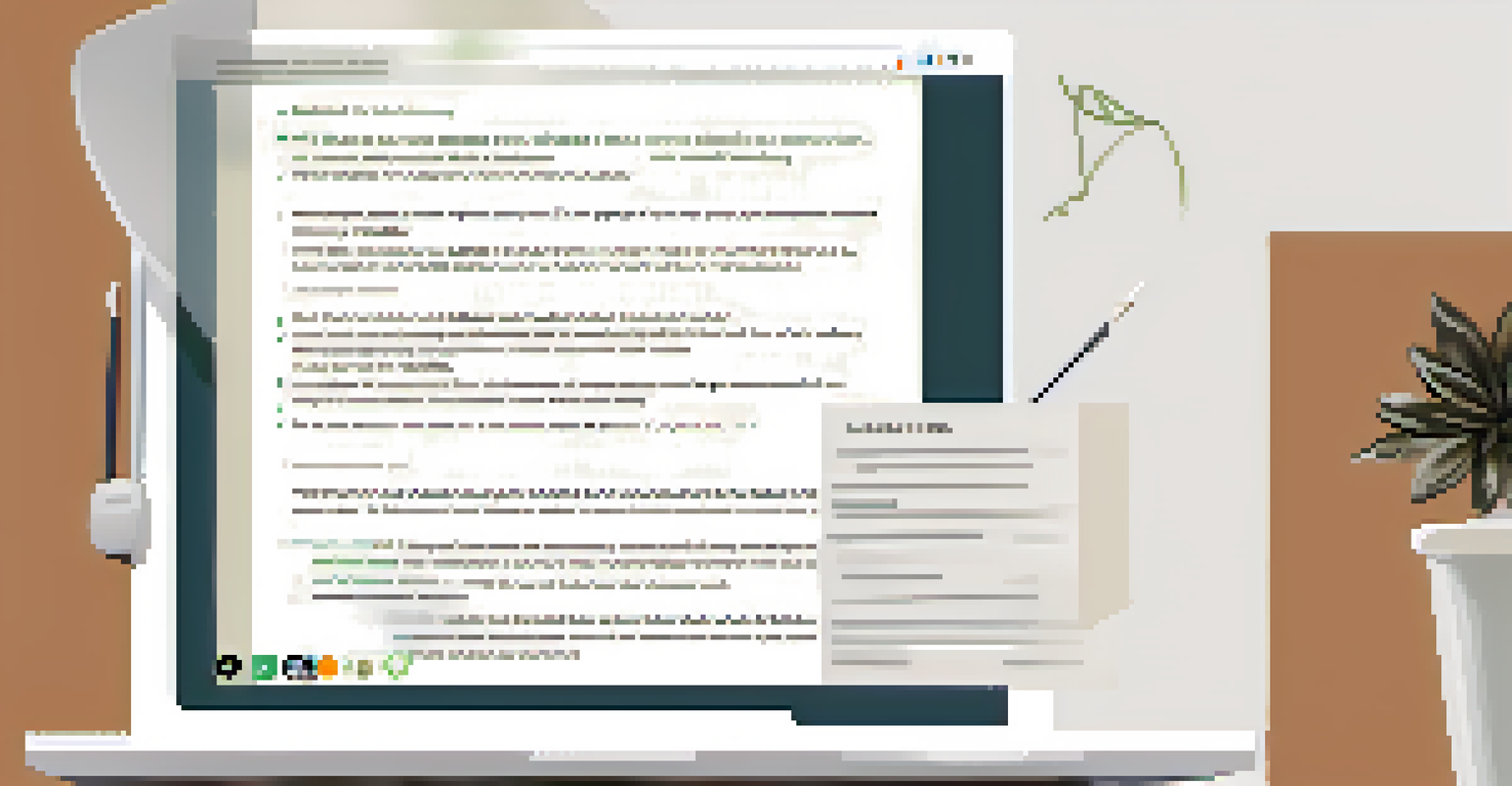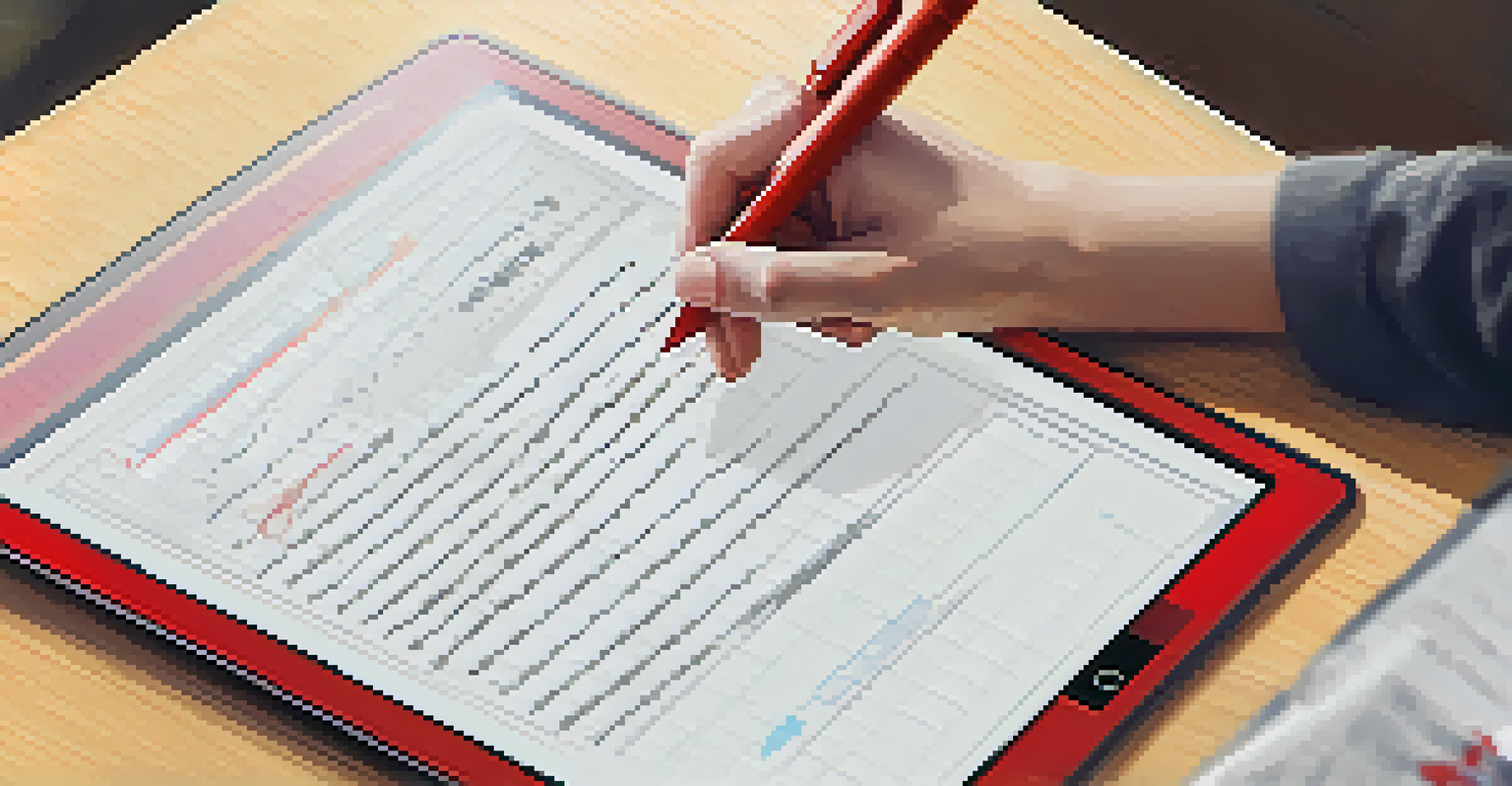Crafting Emails That Enhance Collaboration and Understanding

Understanding the Importance of Clear Communication
In today’s fast-paced work environment, clear communication is vital. Emails are often the primary mode of communication, making it crucial to express ideas without ambiguity. When messages are muddled, it can lead to misunderstandings and hinder collaboration, which is the opposite of what we want to achieve.
The art of communication is the language of leadership.
A well-crafted email is more than just a collection of words; it’s a bridge connecting team members. When everyone understands their roles, tasks, and objectives, the entire team can work more efficiently. Think of emails as the glue that holds collaborative efforts together, making it easier for everyone to align their goals.
By prioritizing clarity in your emails, you can foster an environment where ideas flow freely and team members feel empowered to contribute. Clarity not only enhances understanding but also builds trust among colleagues, creating a more harmonious workplace.
Crafting a Compelling Subject Line
The subject line is the first thing recipients see, and it sets the tone for your email. A clear and engaging subject line can make all the difference in whether your email gets opened promptly or left unread. Aim to summarize the email’s purpose concisely while sparking interest.

For example, instead of a generic subject like 'Meeting Notes,' try 'Key Takeaways from Yesterday’s Strategy Meeting.' This not only informs the recipient about the content but also emphasizes its importance. A strong subject line acts as an invitation to engage with the email.
Importance of Clear Communication
Clear communication prevents misunderstandings and fosters collaboration within teams.
Remember, a well-crafted subject line is your chance to capture attention in a crowded inbox. Taking the time to create one can significantly enhance the likelihood of a timely response and foster better collaboration.
Structuring Your Email for Easy Reading
Structure plays a crucial role in how your message is received. A well-organized email allows the reader to follow your thoughts effortlessly. Break your email into short paragraphs, use bullet points, and highlight key information to enhance readability.
Clear communication is key to collaboration and success in any team.
Imagine reading a dense block of text – it can be overwhelming. By providing a clear structure, you make it easier for your colleagues to grasp your message quickly. This is especially helpful in collaborative settings where time is often of the essence.
Additionally, consider using headings within your email to guide the reader through your points. Just like a good book, your email should have a logical flow that keeps the reader engaged and informed.
Using a Friendly and Professional Tone
The tone of your email can significantly affect how your message is perceived. Striking the right balance between professionalism and friendliness can create a welcoming atmosphere for collaboration. A warm tone encourages openness and fosters a sense of teamwork.
For instance, starting your email with a friendly greeting, such as 'I hope you’re having a great day!' can set a positive tone. Coupling this with professional language ensures your message is taken seriously while remaining approachable.
Crafting Engaging Subject Lines
A compelling subject line increases the chances of your email being opened and read promptly.
Remember, your goal is to create an environment where team members feel comfortable voicing their opinions and ideas. A friendly tone can break down barriers, making it easier for everyone to collaborate effectively.
Encouraging Feedback and Questions
An essential part of effective communication is encouraging feedback. By inviting questions and suggestions, you create a dialogue rather than a monologue. This practice not only enhances understanding but also promotes a culture of collaboration.
In your email, you might include phrases like, 'If you have any thoughts or questions, please feel free to reach out!' This open-ended invitation can lead to valuable discussions that enrich the team’s work and perspective.
Moreover, actively seeking feedback shows that you value your colleagues’ input. It fosters an environment where everyone feels their voice matters, enhancing collaboration and understanding within the team.
Being Mindful of Timing and Frequency
Timing can influence how your email is received. Consider when your team members are most likely to read and respond to emails. For example, sending an email on a Monday morning might get lost amidst the weekend catch-up, while mid-week may yield better results.
Additionally, be mindful of how often you’re sending emails. Excessive communication can lead to email fatigue, where important messages might be overlooked. A good rule of thumb is to consolidate information and communicate only when necessary to maintain engagement.
Encouraging Feedback for Engagement
Inviting feedback promotes dialogue and enhances collaboration among team members.
By being strategic about timing and frequency, you respect your colleagues’ time and attention, making them more likely to engage with your emails and collaborate effectively.
Proofreading for Clarity and Professionalism
Before hitting send, take a moment to proofread your email. Typos and grammatical errors can distract from your message and diminish your professionalism. A quick review can help ensure your email is clear and polished, reinforcing the importance of your message.
Reading your email aloud can also help catch any awkward phrasing or unclear points. If something doesn’t sound right, it’s worth rephrasing for clarity. You want your email to communicate your ideas effectively without causing confusion.

Ultimately, a well-proofread email reflects your commitment to clear communication. It demonstrates respect for your colleagues and their time, enhancing the overall collaborative experience.